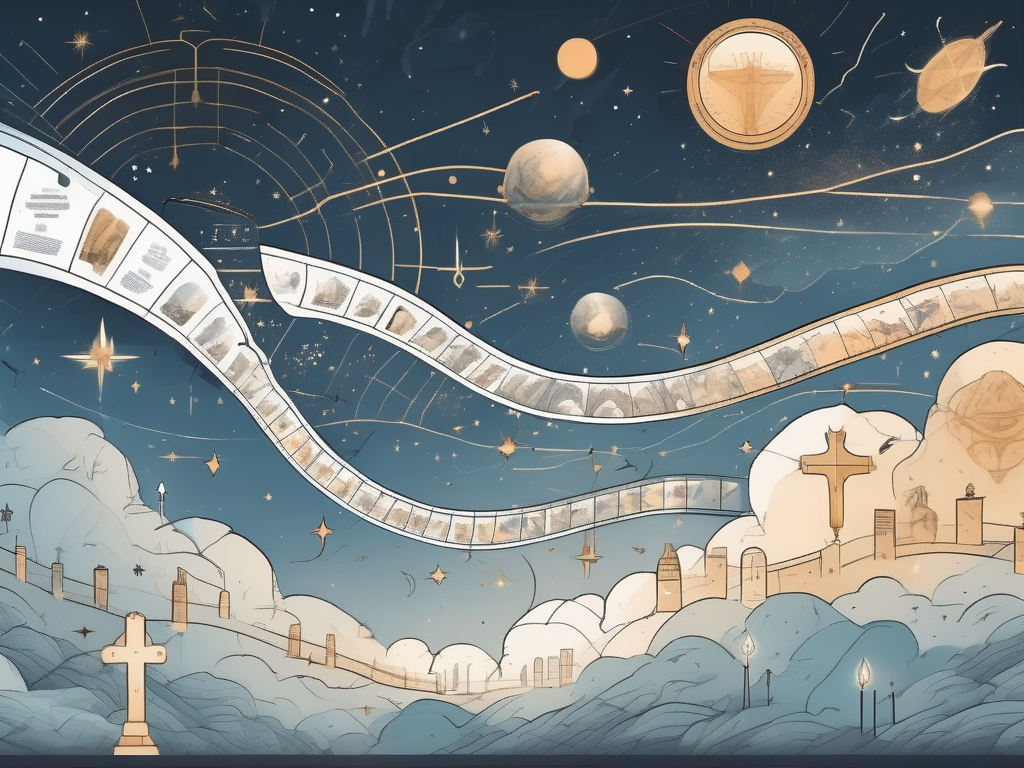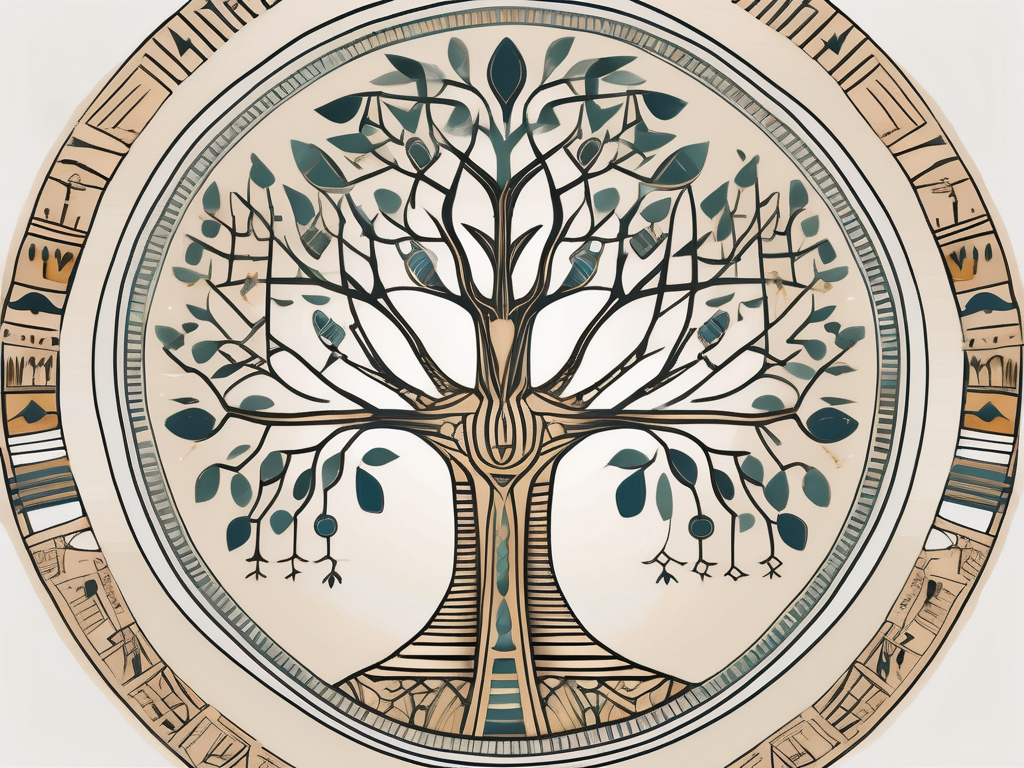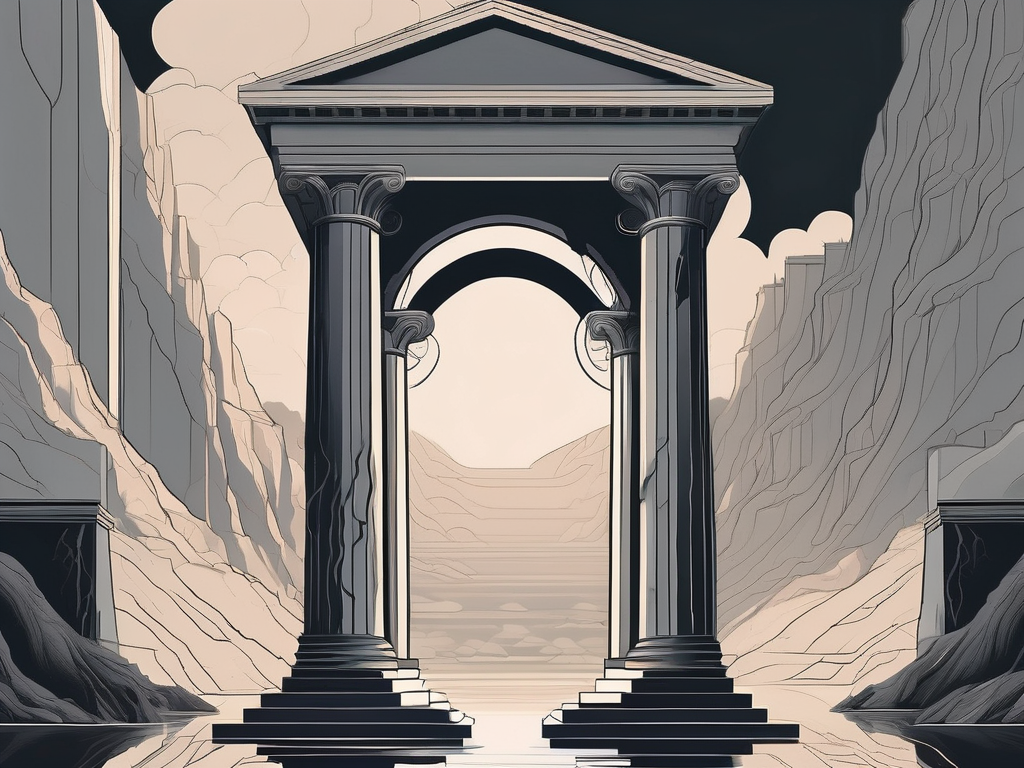Ancient Egyptian mythology is filled with captivating tales of gods and goddesses, each with their own unique powers and stories. Among these deities, one stands out prominently – Osiris. Known as the god of the afterlife and the underworld, Osiris holds a significant place in Egyptian culture and history. In this article, we will delve into the captivating world of Osiris and explore the mysteries surrounding his tomb.
Understanding the Mythology of Osiris
In order to fully comprehend the significance of Osiris’ tomb, we must first understand the mythology surrounding this enigmatic god. Osiris played a crucial role in Egyptian mythology. He was believed to be the son of Geb, the god of earth, and Nut, the goddess of the sky. As the god of the afterlife, Osiris became associated with resurrection and fertility.
According to ancient Egyptian myths, Osiris ruled over Egypt as a wise and benevolent king. However, his brother Set grew jealous of his power and hatched a diabolical plot to take the throne. Set tricked Osiris into getting into a carefully crafted coffin, sealing him inside and throwing it into the Nile River.
The Story of Osiris’ Death and Resurrection
The story of Osiris takes a remarkable turn as his wife, Isis, embarked on a daring mission to recover her beloved husband’s body. She finally located the coffin in the city of Byblos and brought it back to Egypt. With her magical powers, she managed to revive Osiris, albeit in a somewhat altered state.
As the god of the afterlife, Osiris’ resurrection marked the beginning of his transformation into the ruler of the underworld. This transformation symbolized the eternal cycle of life and death, emphasizing the belief in the continuity of existence beyond the physical realm.
Osiris’ resurrection not only had a profound impact on Egyptian mythology but also influenced various aspects of ancient Egyptian society. The belief in Osiris’ ability to conquer death and grant eternal life led to the development of elaborate burial practices and rituals. Egyptians sought to emulate Osiris’ journey through death and resurrection, hoping to secure a place in the afterlife.
Furthermore, Osiris’ resurrection served as a source of hope and comfort for the ancient Egyptians. In a world filled with uncertainty and the inevitability of death, Osiris represented the promise of renewal and the possibility of a blissful existence beyond the earthly realm.
The mythology of Osiris also had a significant impact on the religious practices of ancient Egypt. Temples dedicated to Osiris were built throughout the kingdom, and rituals honoring him were performed regularly. These rituals aimed to invoke Osiris’ power and seek his blessings for fertility, prosperity, and protection.
Moreover, the story of Osiris’ death and resurrection became a popular theme in Egyptian art and literature. Depictions of Osiris’ mummified body, his wife Isis, and the god Horus, their son, adorned the walls of temples and tombs. These artistic representations not only celebrated Osiris’ triumph over death but also served as a visual reminder of the eternal nature of the soul.
In conclusion, the mythology of Osiris is a rich and complex narrative that encompasses themes of life, death, resurrection, and the afterlife. Osiris’ story continues to captivate and inspire people to this day, reminding us of the enduring human fascination with the mysteries of existence and the hope for eternal life.
The Prophecy of Osiris’ Tomb
One of the most intriguing aspects of Osiris’ mythology is the prophecy surrounding his tomb. Ancient hieroglyphs found within Egyptian temples and tombs have provided hints and clues about the location and significance of Osiris’ resting place. However, deciphering these ancient symbols has proven to be a daunting task for archaeologists and Egyptologists alike.
Legend has it that the prophecy of Osiris’ tomb holds the key to unlocking unimaginable power and wisdom. It is said that whoever can unravel the secrets hidden within the hieroglyphs will gain access to untold treasures and ancient knowledge. This has fueled the curiosity and fascination of researchers and adventurers throughout history.
Deciphering Ancient Hieroglyphs
Unraveling the secrets of Osiris’ tomb relies heavily on the ability to understand and accurately interpret ancient hieroglyphs. These intricate and intricate symbols offer a glimpse into the beliefs and rituals of the ancient Egyptians. By studying the hieroglyphs associated with Osiris, researchers hope to unlock the hidden messages and prophecies related to his tomb.
The process of deciphering hieroglyphs is no easy task. It requires a deep understanding of the ancient Egyptian language, as well as a keen eye for detail. Each symbol carries multiple meanings, and their arrangement within a text can significantly alter the overall message. Egyptologists spend years honing their skills and expertise to be able to accurately decipher these ancient writings.
Furthermore, the hieroglyphs themselves are not just simple drawings. They are a complex system of phonetic and ideographic signs, representing both sounds and concepts. This intricate nature adds another layer of complexity to the decipherment process.
The Significance of the Prophecy
The prophecy of Osiris’ tomb holds great significance not only for the field of Egyptology but also for enthusiasts of ancient history. If successfully deciphered, the prophecy could shed light on Osiris’ role in Egyptian society and provide valuable insights into the religious practices and beliefs of that time.
Moreover, the prophecy may reveal the true purpose of Osiris’ tomb. Was it merely a burial site for a revered deity, or does it hold deeper secrets and mysteries? Some speculate that the tomb may serve as a gateway to another realm, a portal to the afterlife itself. This notion has captivated the imaginations of many, sparking countless expeditions and quests to uncover the truth.
It is important to note that the prophecy is not just a single message but rather a collection of fragmented texts scattered throughout various ancient sources. Piecing them together like a jigsaw puzzle is a painstaking process, requiring meticulous attention to detail and a deep understanding of the cultural and religious context in which they were created.
As researchers continue their efforts to decipher the prophecy of Osiris’ tomb, they remain hopeful that one day they will unlock its secrets and reveal the true extent of Osiris’ influence and significance in ancient Egyptian mythology.
Archaeological Discoveries Related to Osiris
Archaeological excavations have played a vital role in uncovering the long-lost mysteries of Osiris’ tomb. Over the years, several significant discoveries have been made that shed light on the enduring legacy of this ancient god.
Unearthing the Tomb of Osiris
One of the most remarkable discoveries related to Osiris is the alleged unearthing of his tomb. This find, however, remains highly controversial, with some experts doubting its authenticity. Despite the skepticism, the search for Osiris’ tomb continues, fueled by the belief that it holds vital clues about ancient Egyptian civilization.
Artifacts and Their Symbolic Meanings
Alongside the alleged tomb of Osiris, numerous artifacts have been discovered that provide invaluable insight into the symbolic meanings and religious practices associated with this god. These artifacts include statues, amulets, and intricate wall paintings that depict scenes from Osiris’ life and afterlife.
The Influence of Osiris on Modern Culture
Osiris, despite being an ancient god, continues to hold a significant place in modern culture, both in literature and film.
Osiris in Literature and Film
Countless authors and filmmakers have found inspiration in the mythology of Osiris, creating captivating stories that feature this revered deity. From novels to blockbuster movies, the influence of Osiris can be felt across various forms of media, captivating audiences around the world.
The God Osiris in Contemporary Egyptian Culture
Osiris remains deeply ingrained in the culture of modern-day Egypt. From traditional festivities to the preservation of ancient temples, the legacy of Osiris lives on. Egyptians continue to honor and pay homage to this ancient god, keeping alive the rich heritage and mythology of their ancestors.
The Mysteries Surrounding Osiris’ Tomb
Despite the extensive research and archaeological discoveries, numerous mysteries still shroud Osiris’ tomb.
Unanswered Questions and Theories
Researchers and scholars continue to grapple with unanswered questions surrounding Osiris’ tomb. Where exactly is it located? Are there hidden chambers and passageways waiting to be discovered? These lingering uncertainties fuel ongoing debates and theories, keeping the intrigue and fascination alive.
The Future of Osiris’ Tomb Exploration
The quest to unveil the secrets of Osiris’ tomb is far from over. As technology advances and archaeological techniques evolve, there is hope that one day we will stand in awe before the treasures and wisdom hidden within Osiris’ final resting place. Until then, the mystery remains, captivating the imagination of all those drawn to the ancient wonders of Egypt.
Uncovering the Forgotten Legacy of Osiris
In conclusion, Osiris’ tomb stands as a testament to the enduring fascination and allure of ancient Egyptian mythology. The prophecy surrounding his tomb, the archaeological discoveries, and the influence on modern culture all serve as reminders of the power that this god once held.
As we delve into the captivating world of Osiris, we find ourselves not only uncovering the secrets of an ancient god but also gaining insights into the hopes, fears, and beliefs of the vibrant civilization that worshipped him. The journey to unveil the mysteries of Osiris’ tomb is ongoing, ensuring that his legacy lives on for generations to come.












